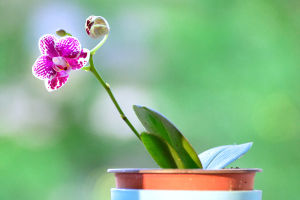Roses are considered the quintessential romantic flowers, and they are one of the most popular choices for Valentine's Day or marriage proposals. Not only do they symbolize love, but they also have a beautiful fragrance and come in a variety of bright colors.
However, caring for roses can be quite challenging, especially for those who are new to gardening. Here are some tips to help you care for your roses and keep them healthy.
Soil
The soil is the foundation for the healthy growth of your roses. It's best to use loose, humus-rich soil that contains a sufficient amount of nutrients and beneficial microorganisms.
The soil should also be well-draining, as roses don't like to sit in water. You can add compost or well-rotted manure to improve the soil's fertility.
Light
Roses require abundant sunlight to flourish, needing at least four hours or more of direct sunlight daily. It's vital to plant them in a location that benefits from full sun exposure to ensure their health and bloom. Nonetheless, in the peak of summer when the sun is most intense, providing some shade is important to shield them from sunburn and overheating.
Watering
Water is essential for the growth of your roses. They prefer a dry, warm environment and are drought-tolerant. However, they don't like to be overwatered, as this can lead to waterlogging and cause root rot. Water your roses every 2-3 days and make sure the water reaches the roots.
Fertilizer
Roses don't require a lot of fertilizer, but a regular application can help them grow more vigorously and produce more blooms.
During the growing season, you can spray fertilizer on the foliage once every seven days.
You can also apply well-rotted farmyard manure before the spring growth season and use human and animal manure or chemical fertilizer after sprouting. To encourage healthy growth and flowering, you can add a little compound fertilizer to the potting soil once a month.
Pruning
Pruning is a crucial practice to maintain the health of your roses and encourage vigorous new growth. The optimal time for pruning your roses is in early spring or late winter, just before the onset of new growth. During pruning, it's important to eliminate any branches that are dead, damaged, or diseased, helping to prevent the spread of pests and diseases.
Additionally, trimming the remaining branches to a consistent height can promote a more uniform and aesthetically pleasing shape. Removing any suckers or shoots that emerge from the base of the plant is also recommended, as these can divert energy away from the main blooms.
Pest and Disease Control
Roses are susceptible to various pests and diseases, including powdery mildew, black spots, and rust.
Regular monitoring of your roses can help you detect any signs of disease or pests early on.
If you notice any signs of disease, remove the affected branches and leaves and dispose of them properly. You can also use organic or chemical pesticides to control pests and diseases.
Caring for roses indeed demands dedication and a keen eye for detail, but the outcome—lush, beautiful blooms and their exquisite fragrance—amply rewards your efforts. Whether you're drawn to roses for their romantic allure or simply to enhance the beauty of your garden, adhering to these care tips is essential for maintaining healthy and flourishing roses.
With proper attention, your roses will not only thrive but also become a standout feature in your home or garden, captivating everyone with their charm and scent.


